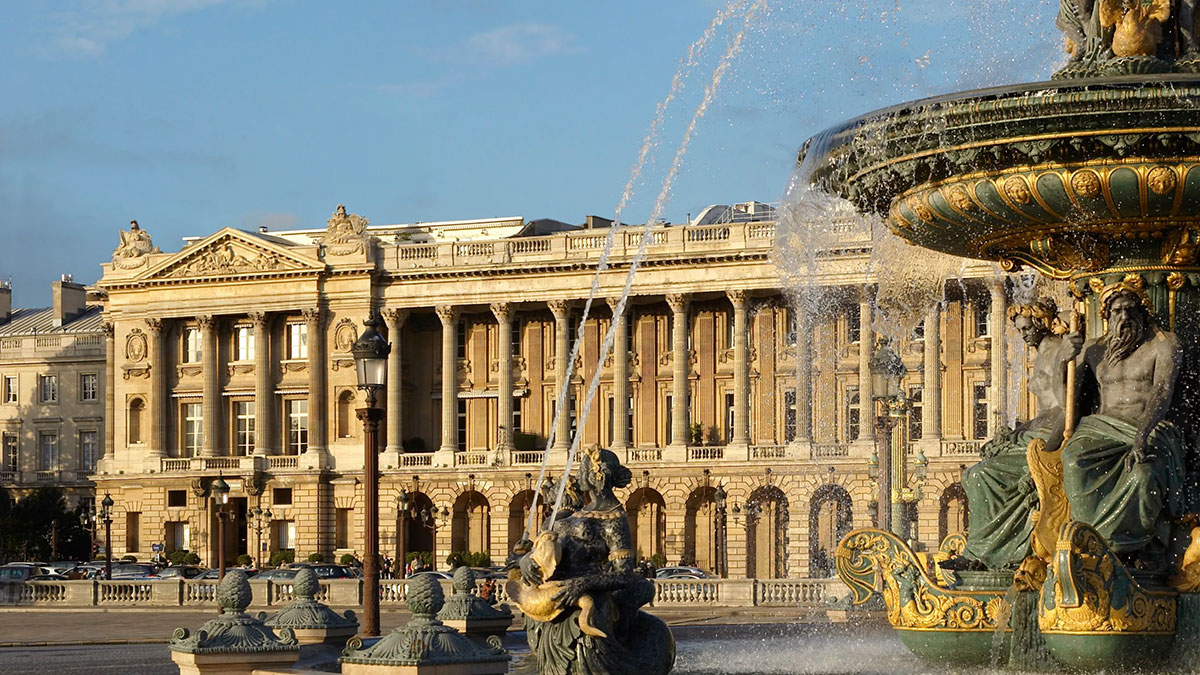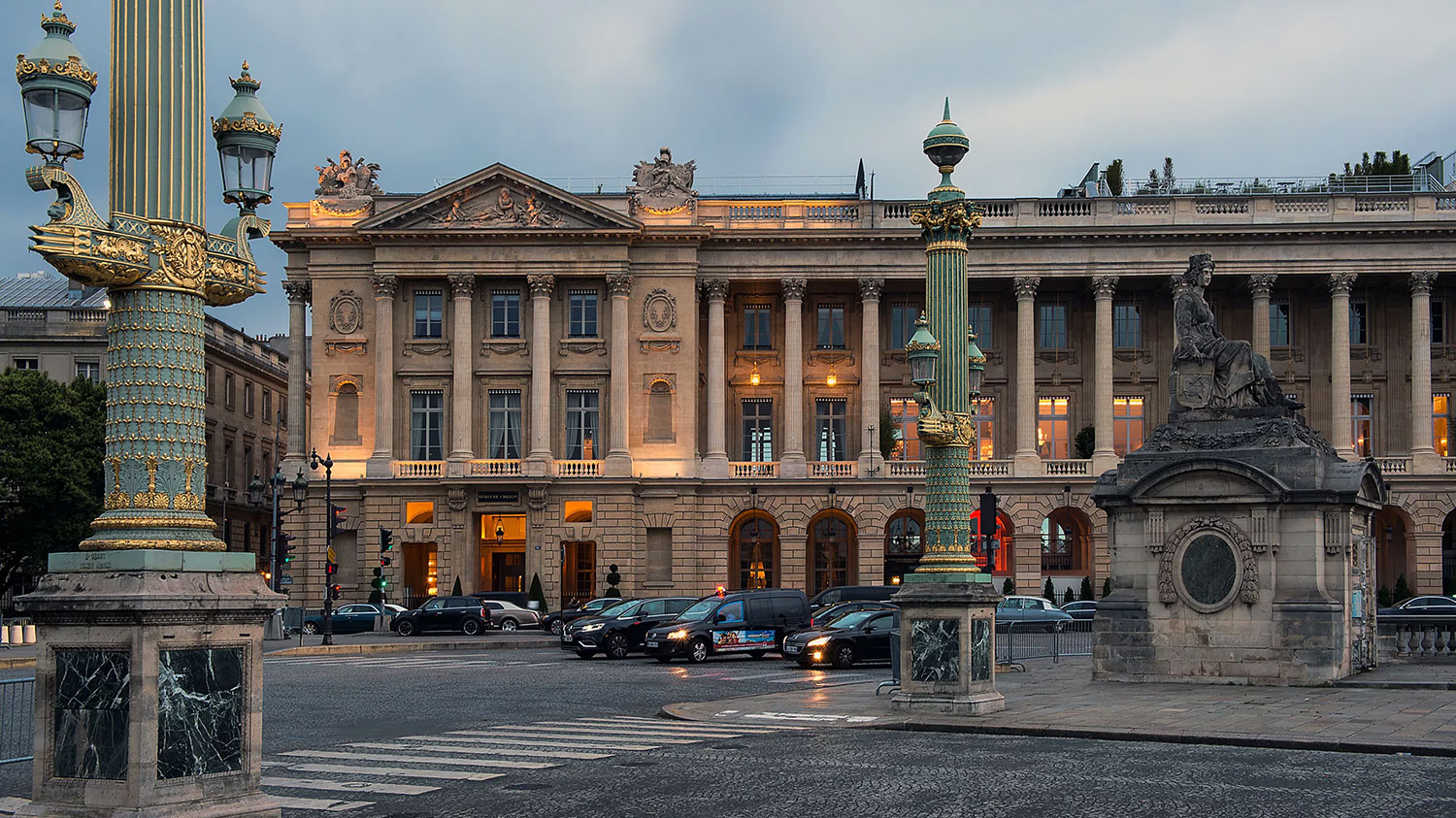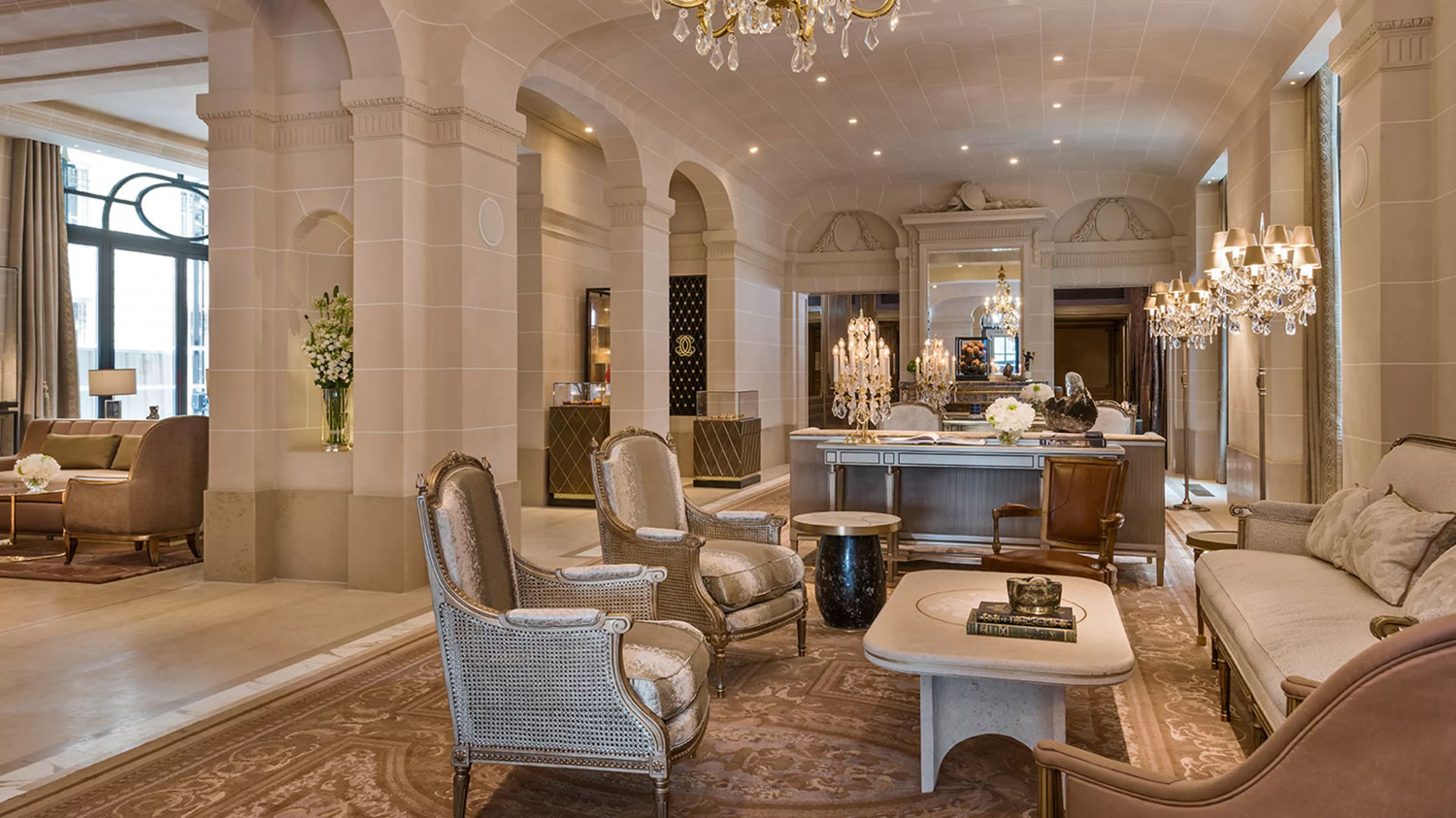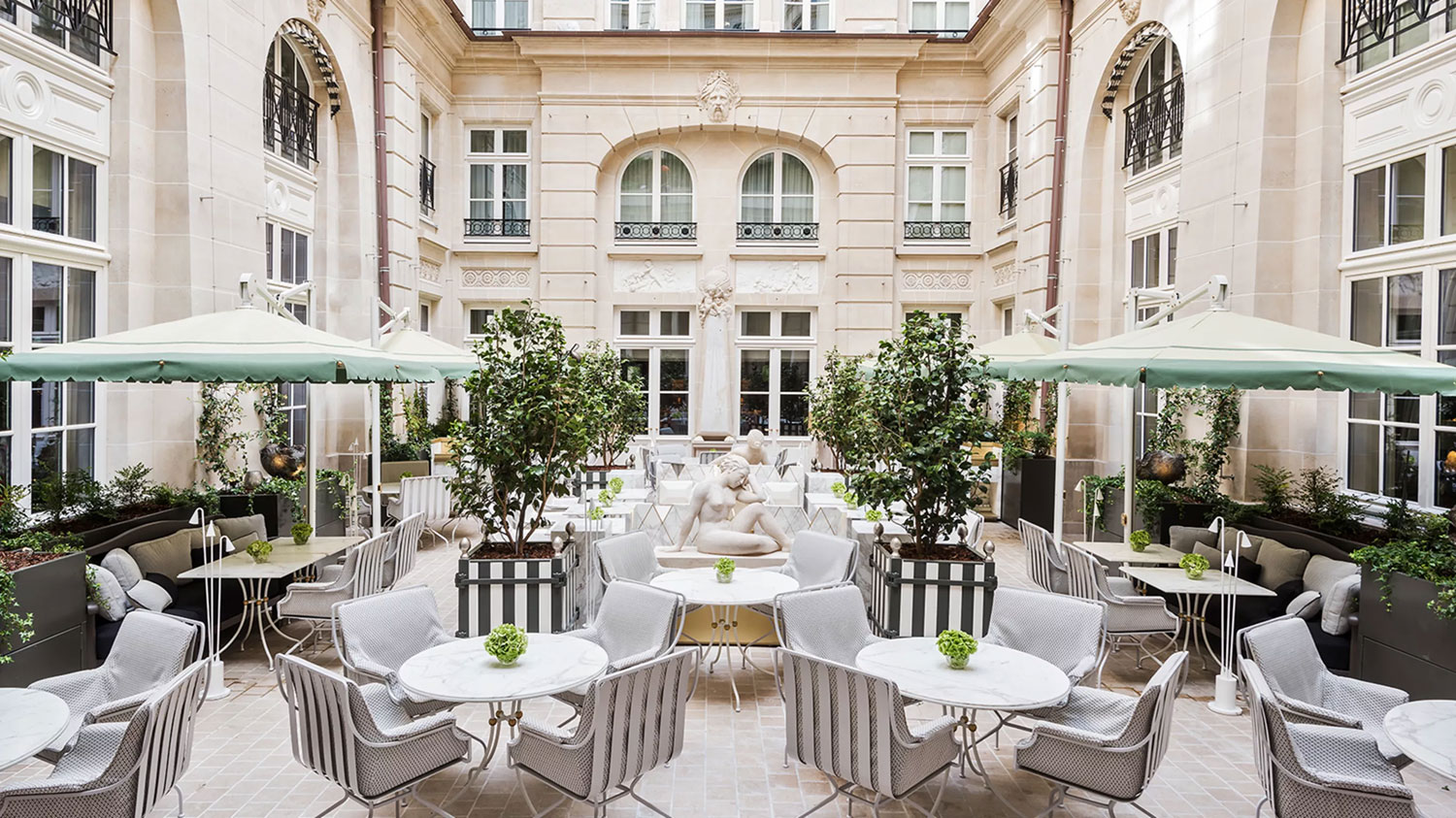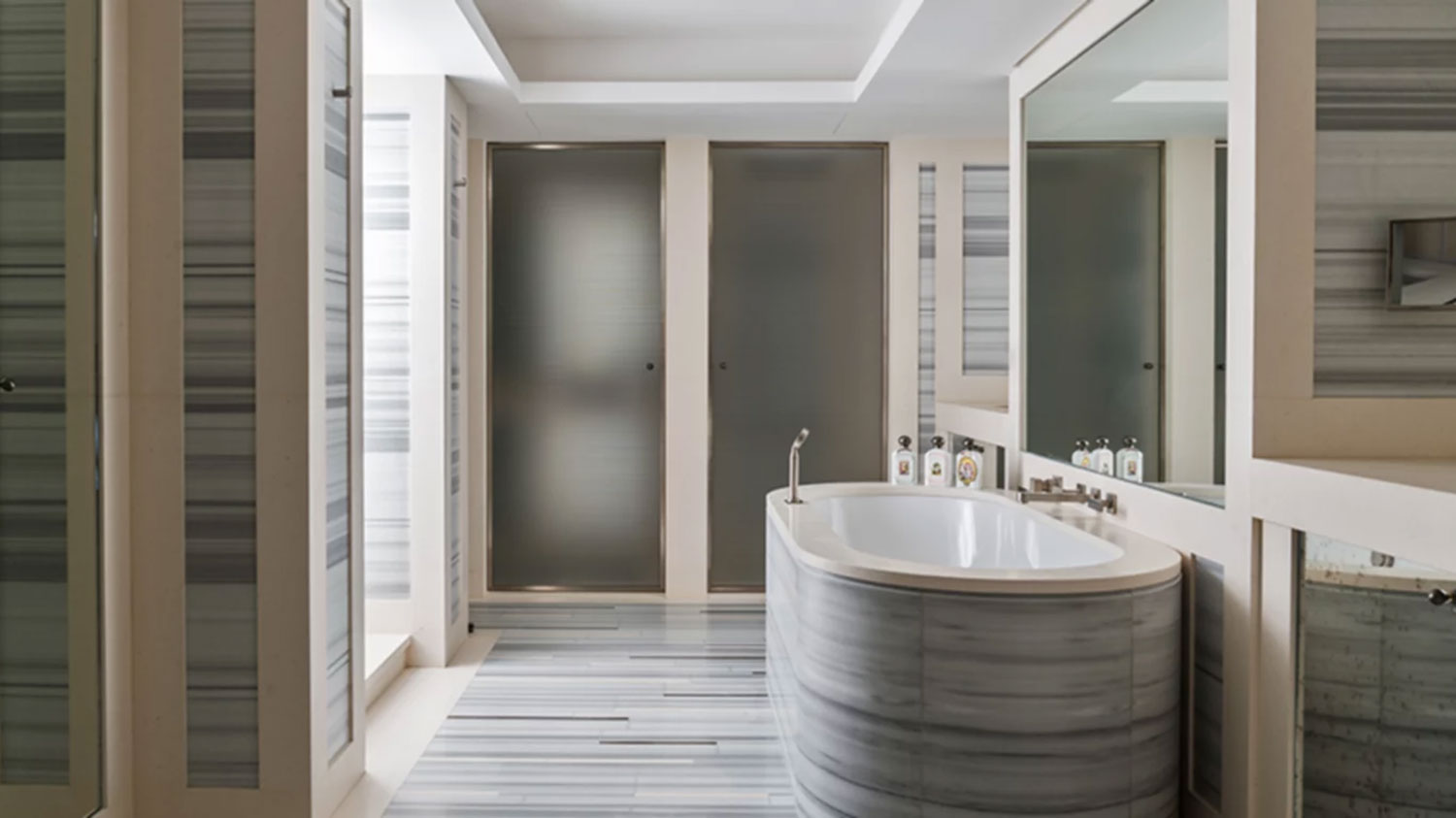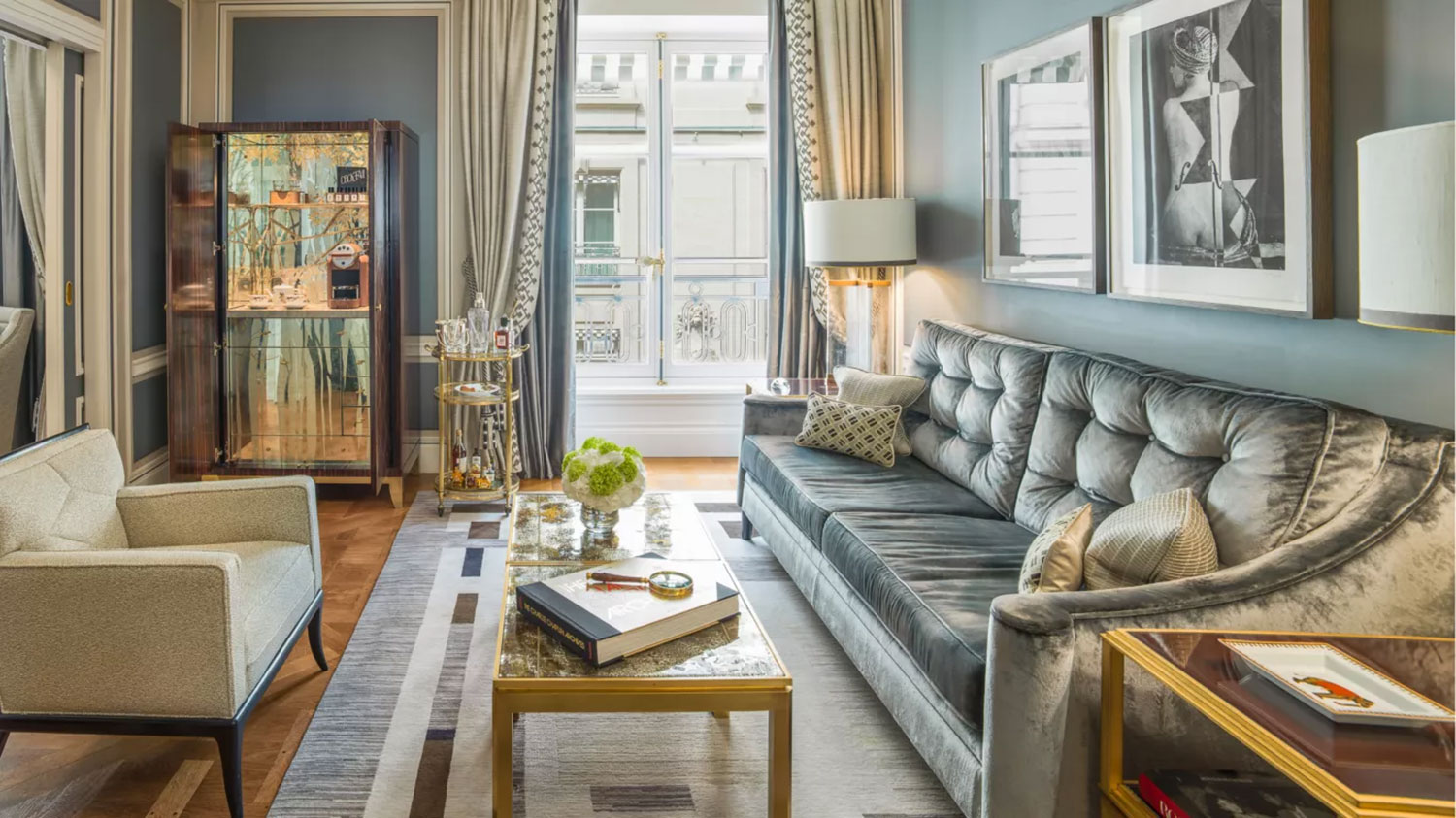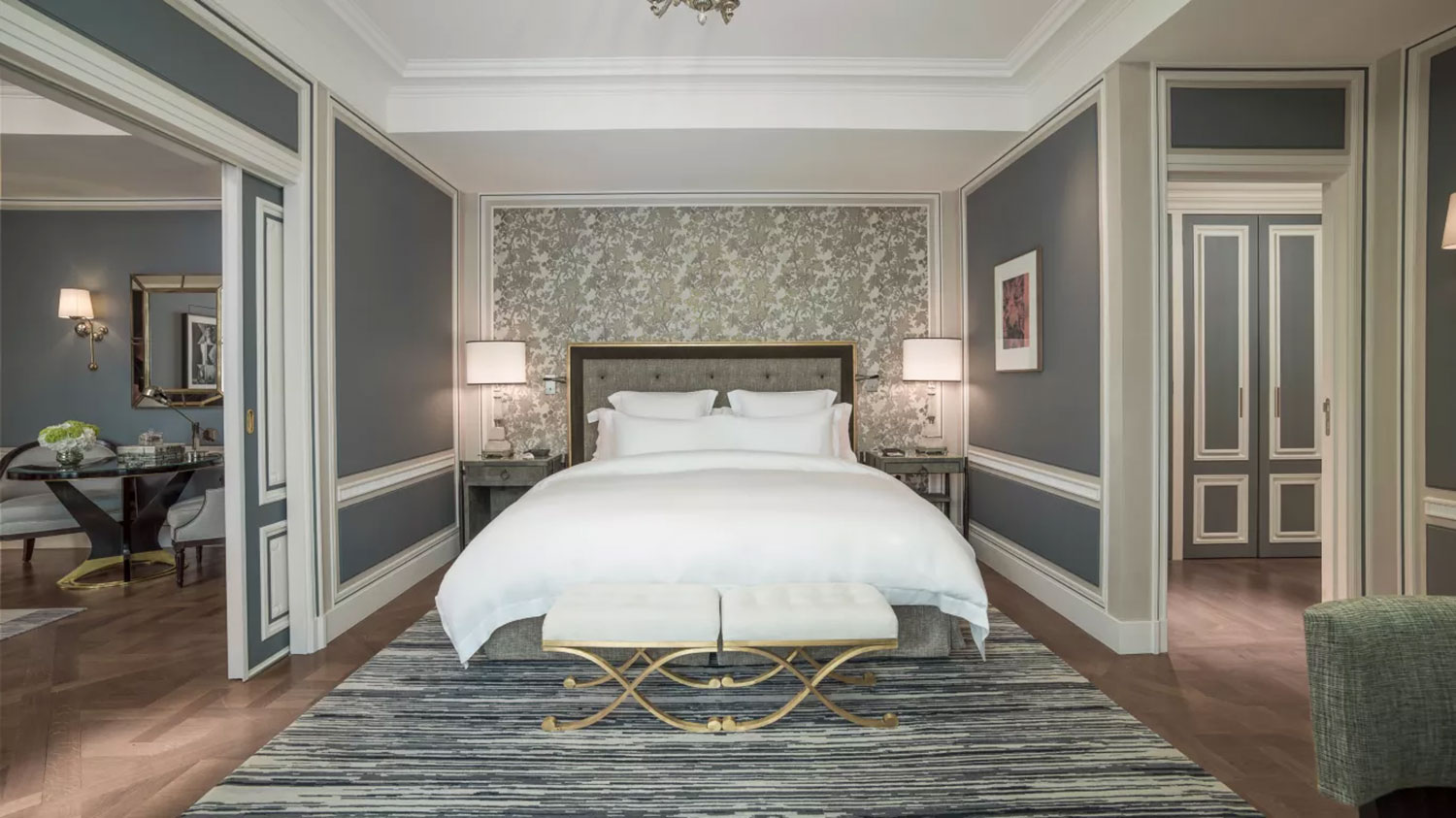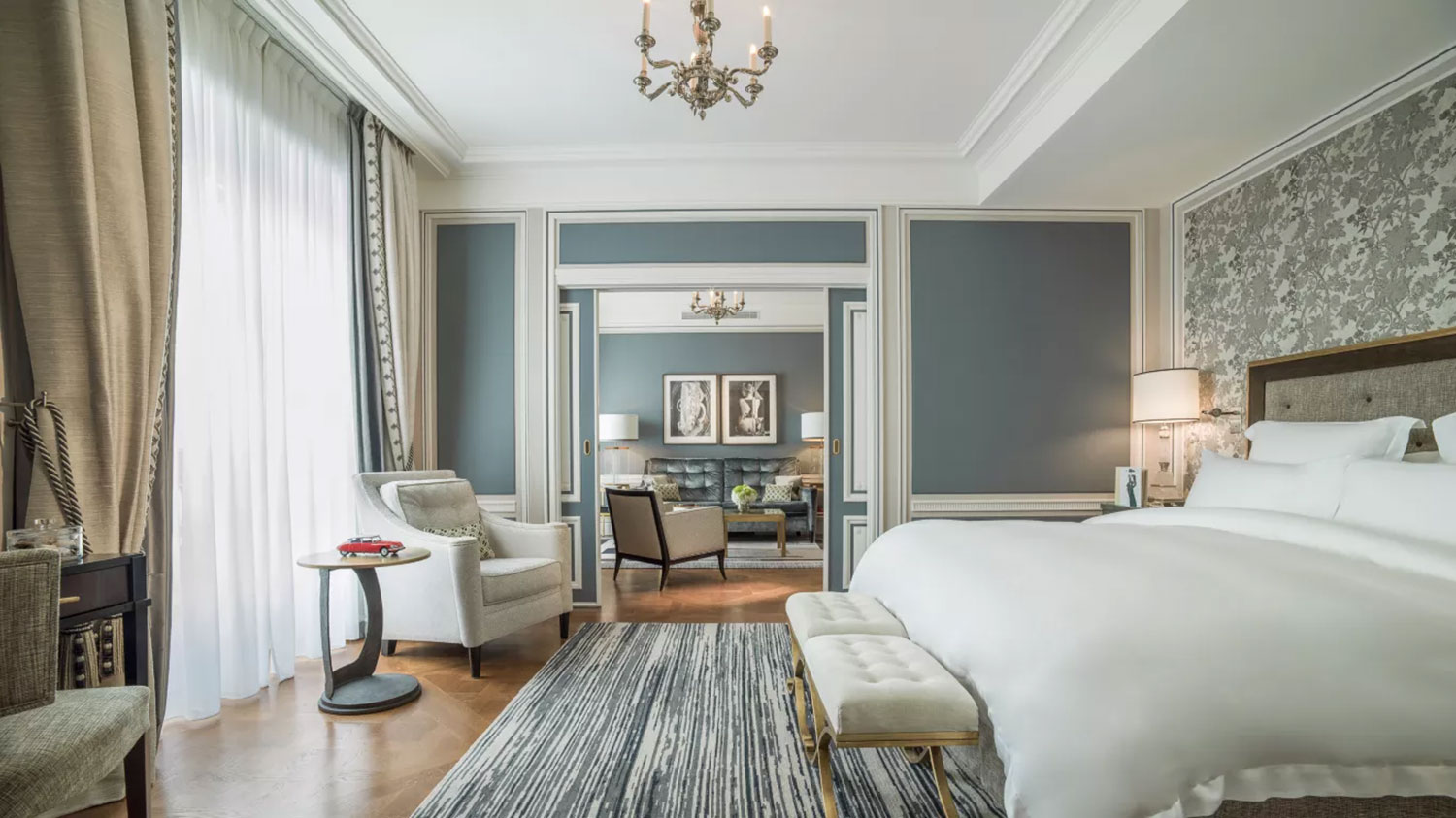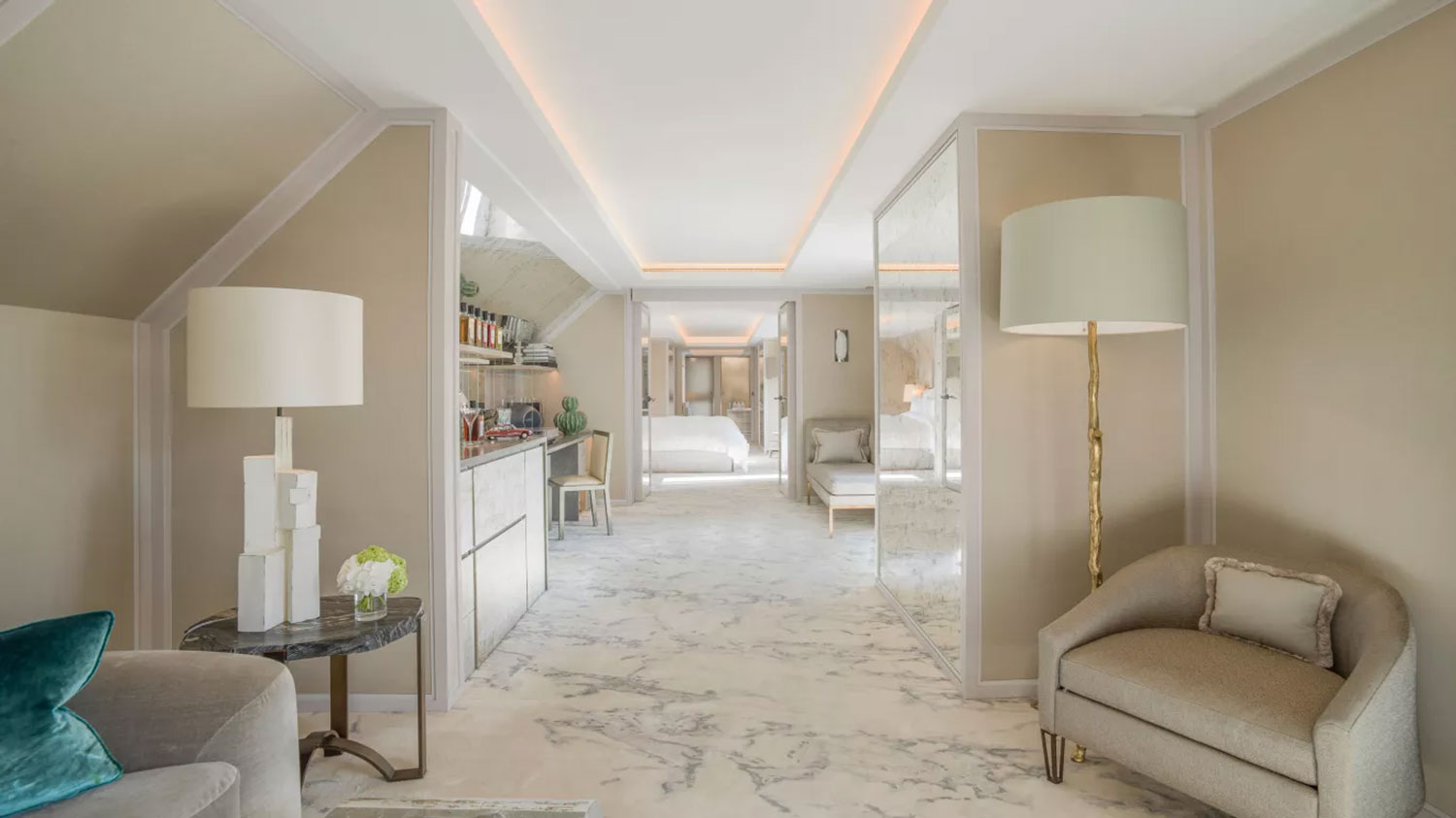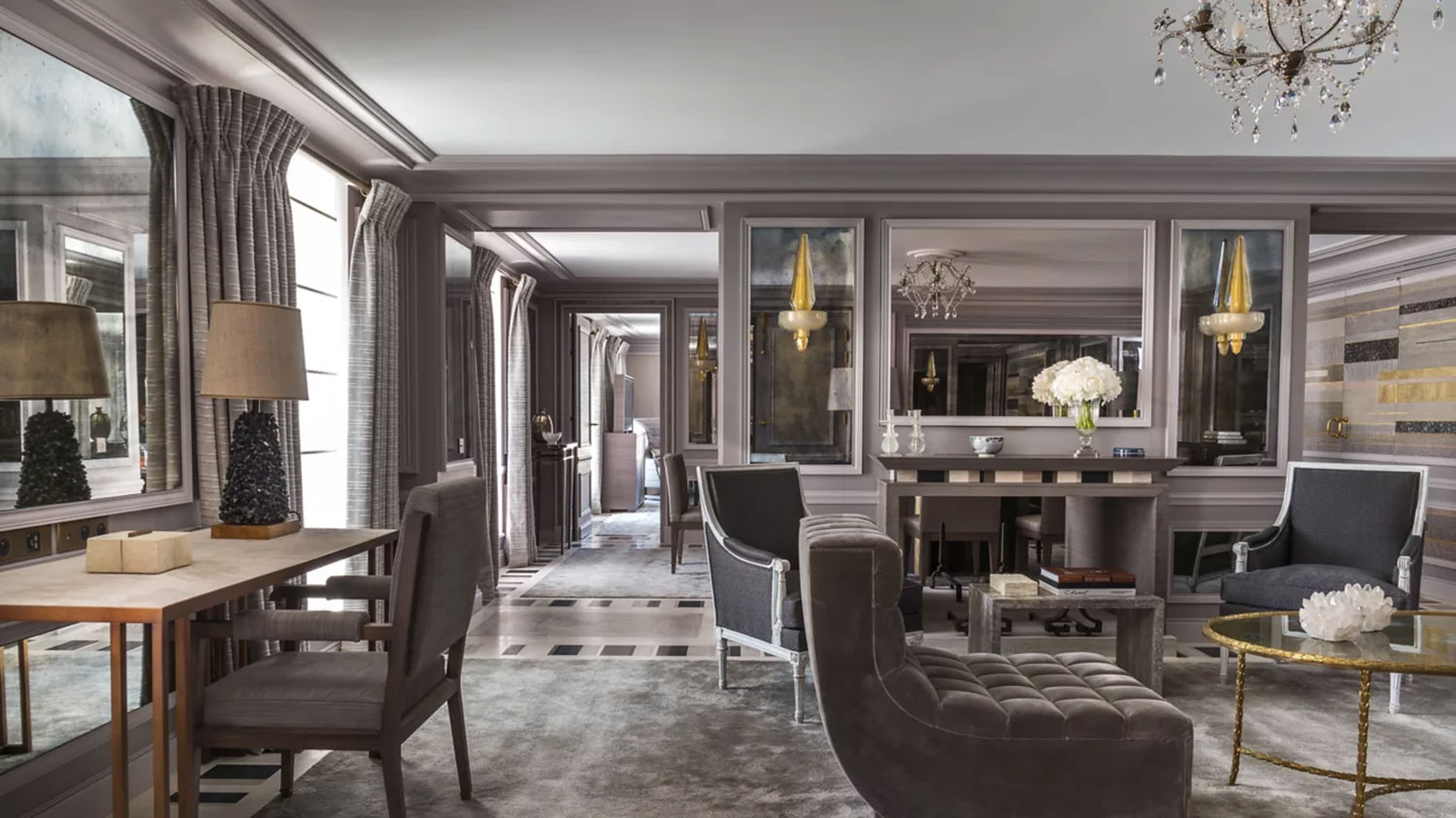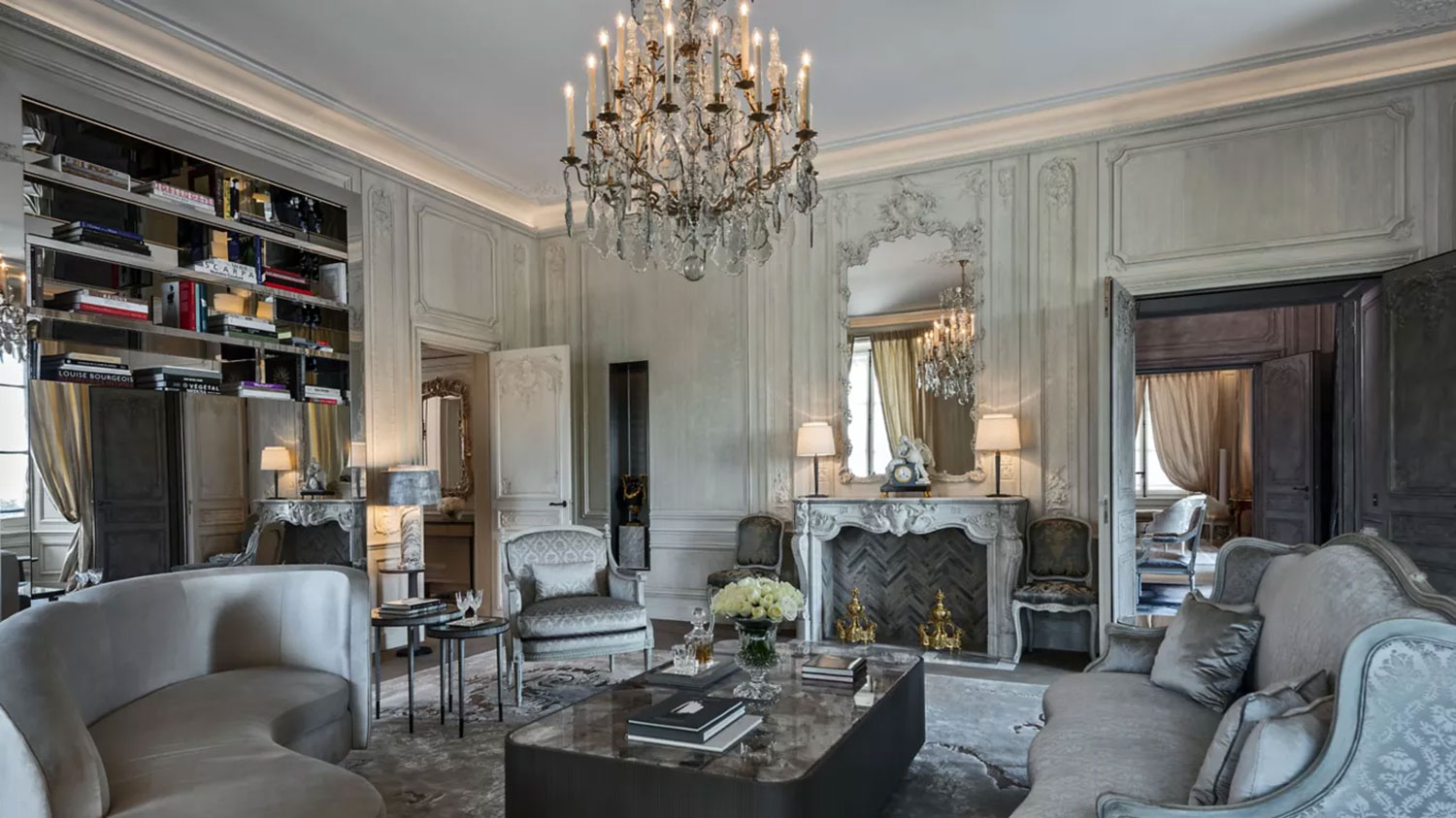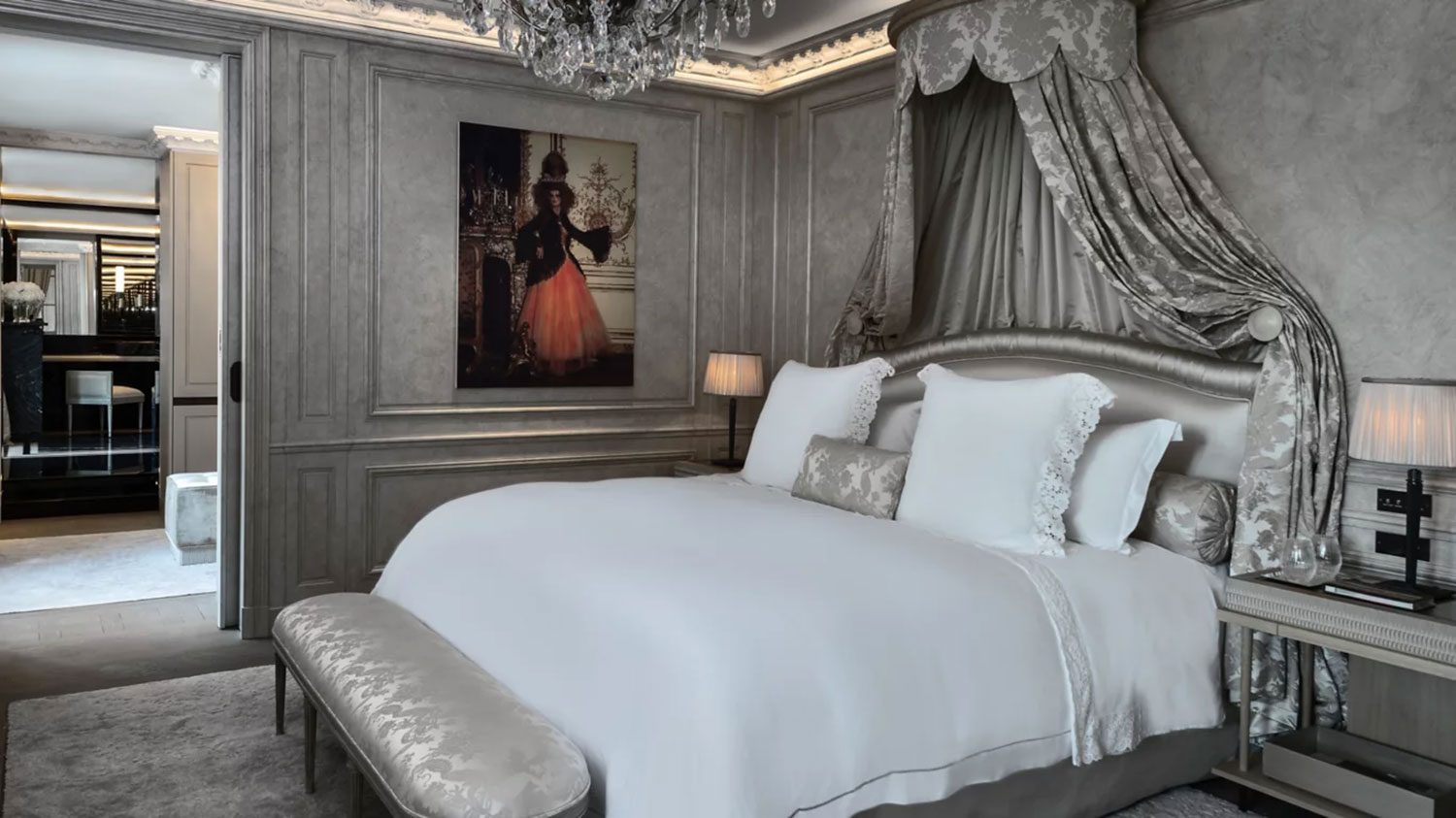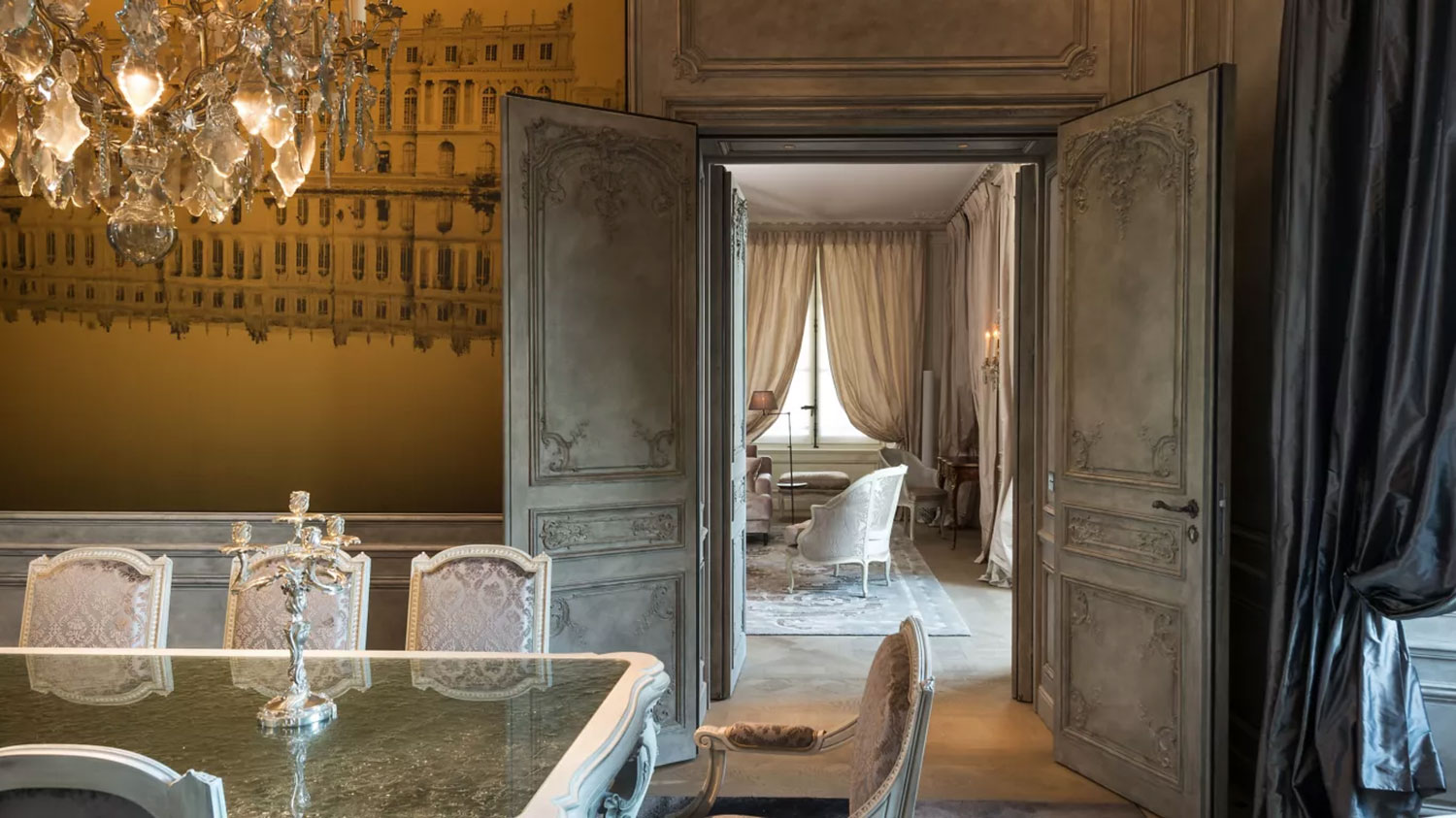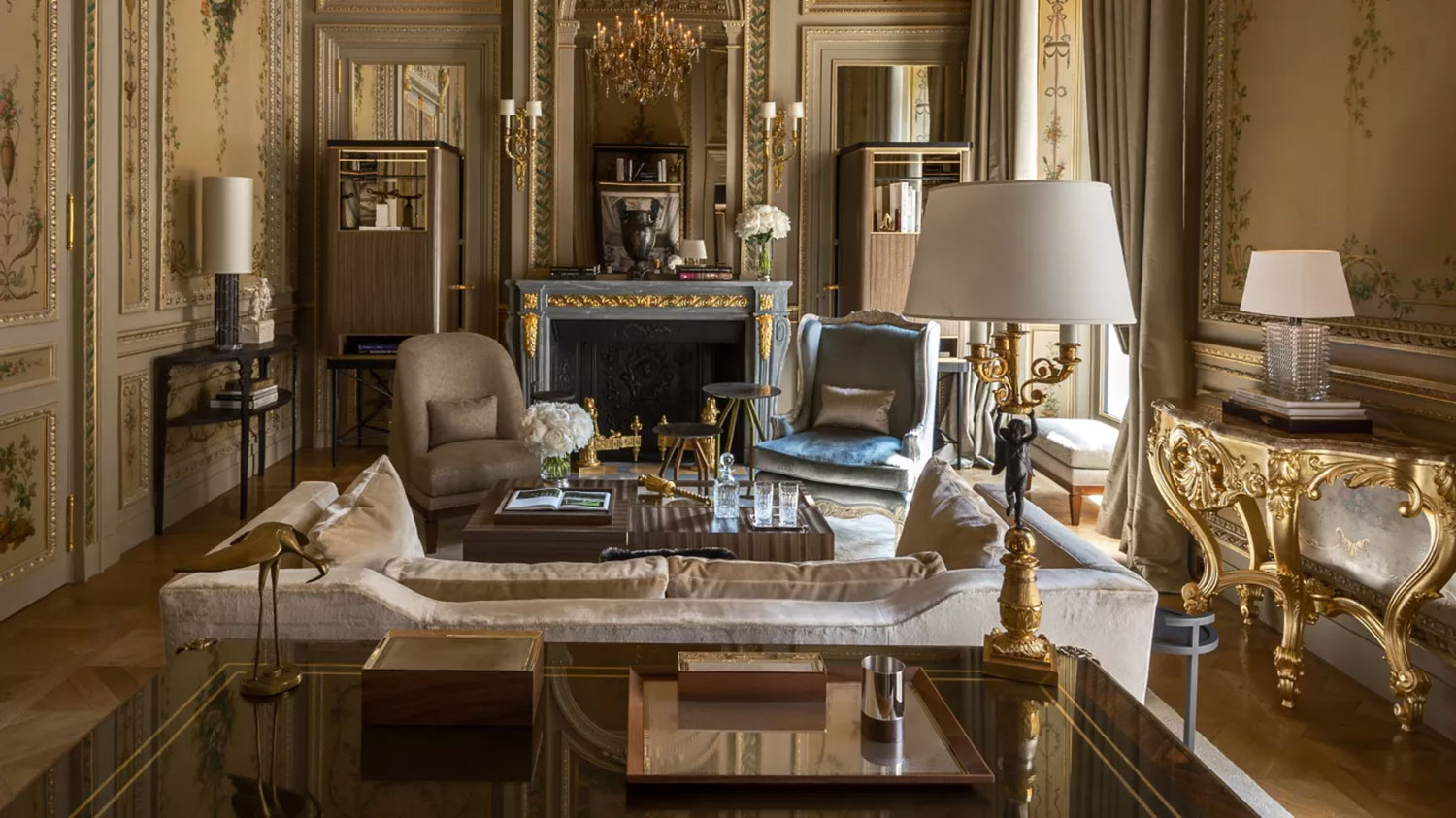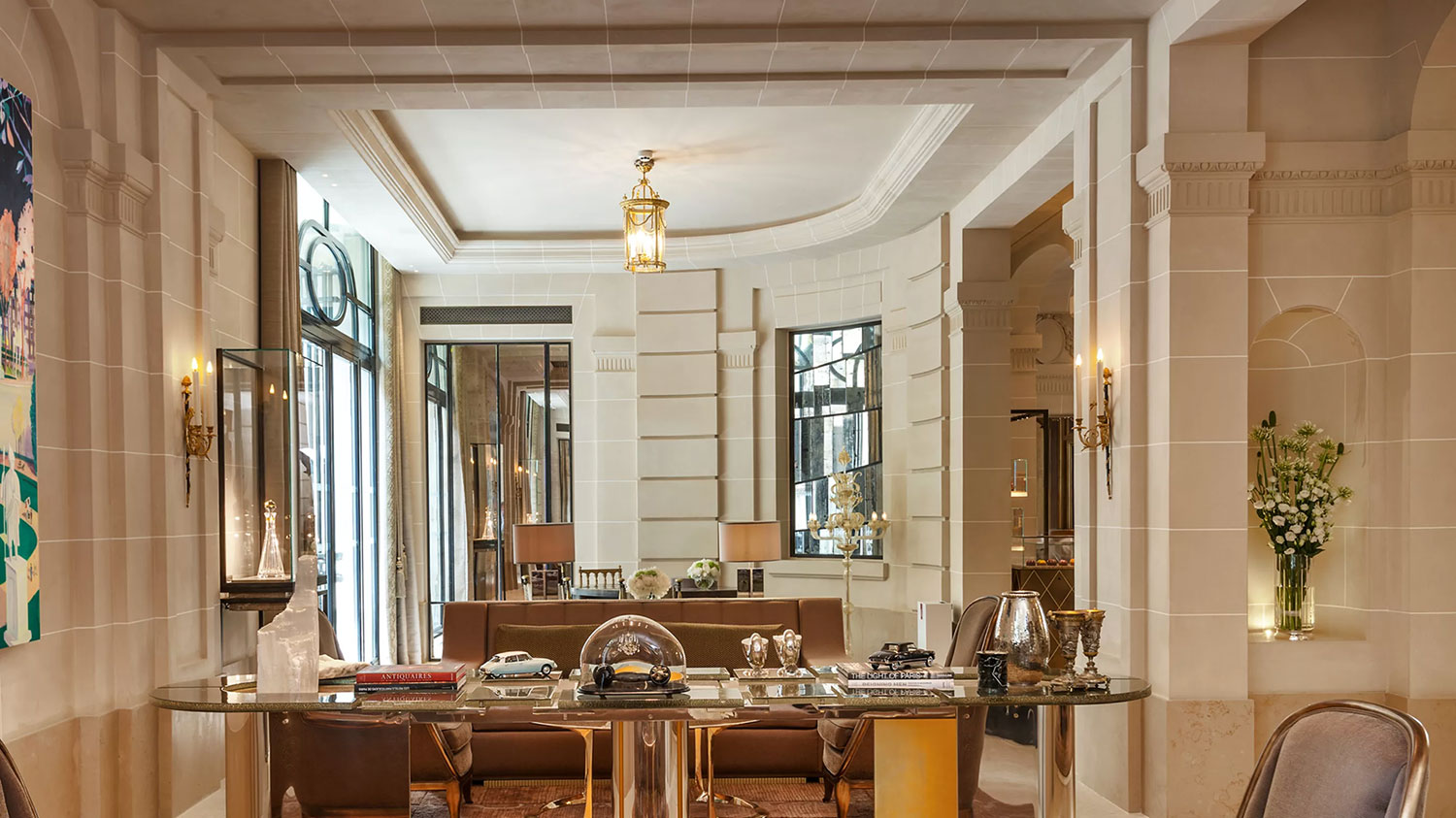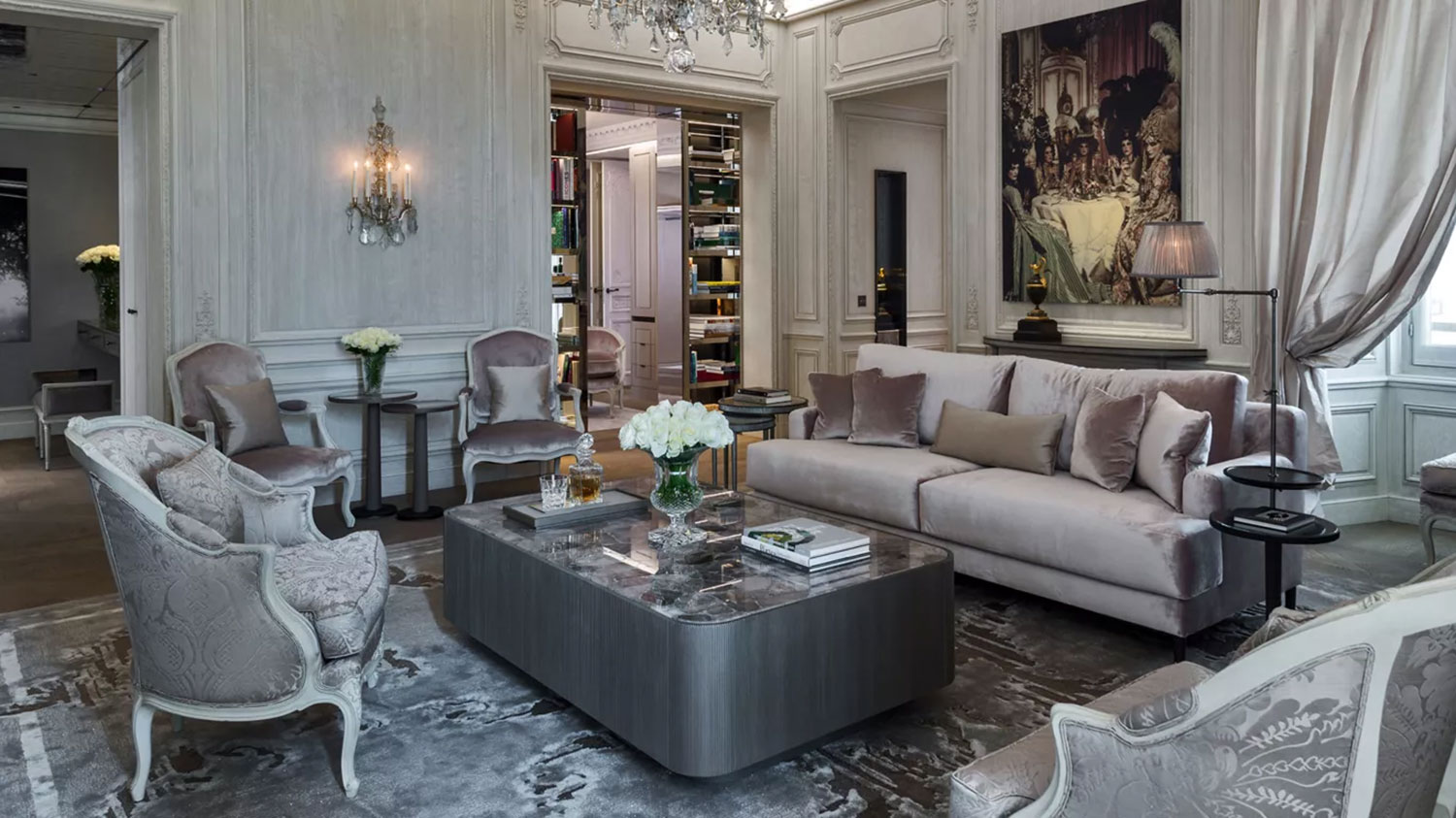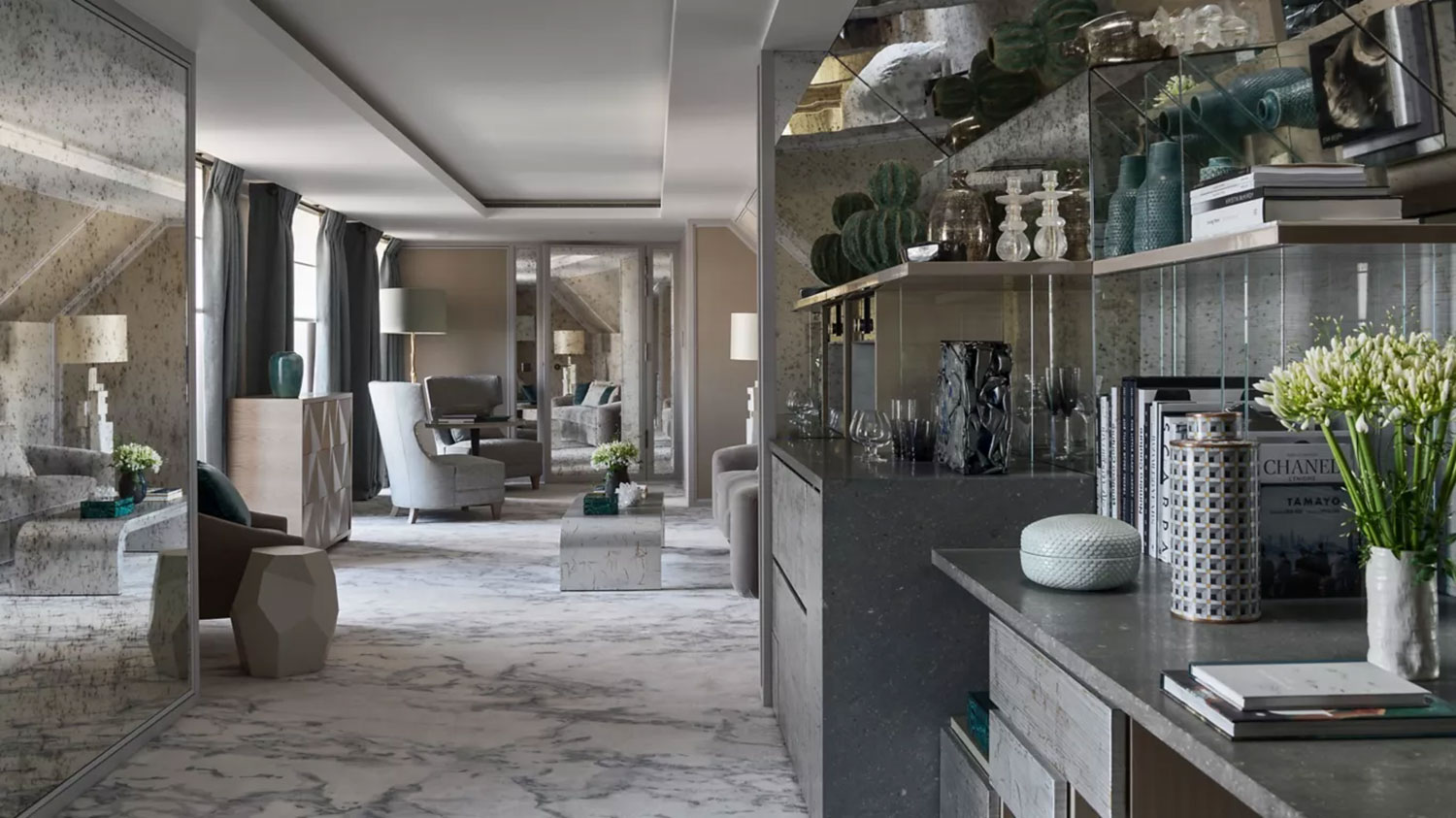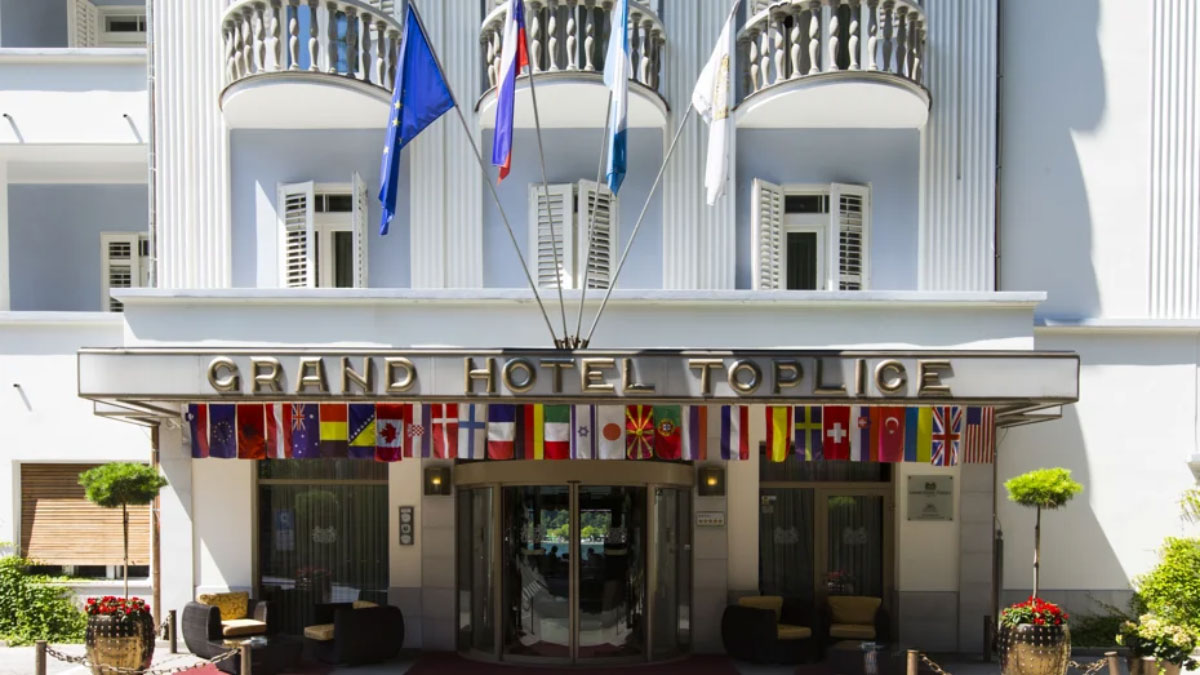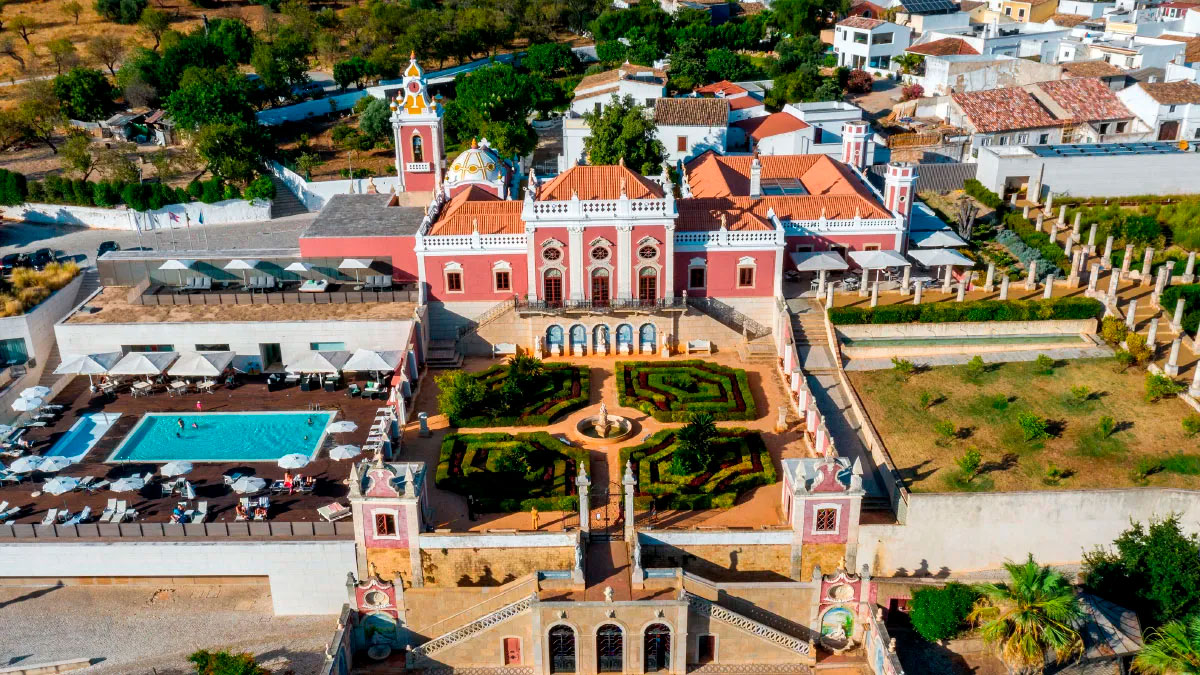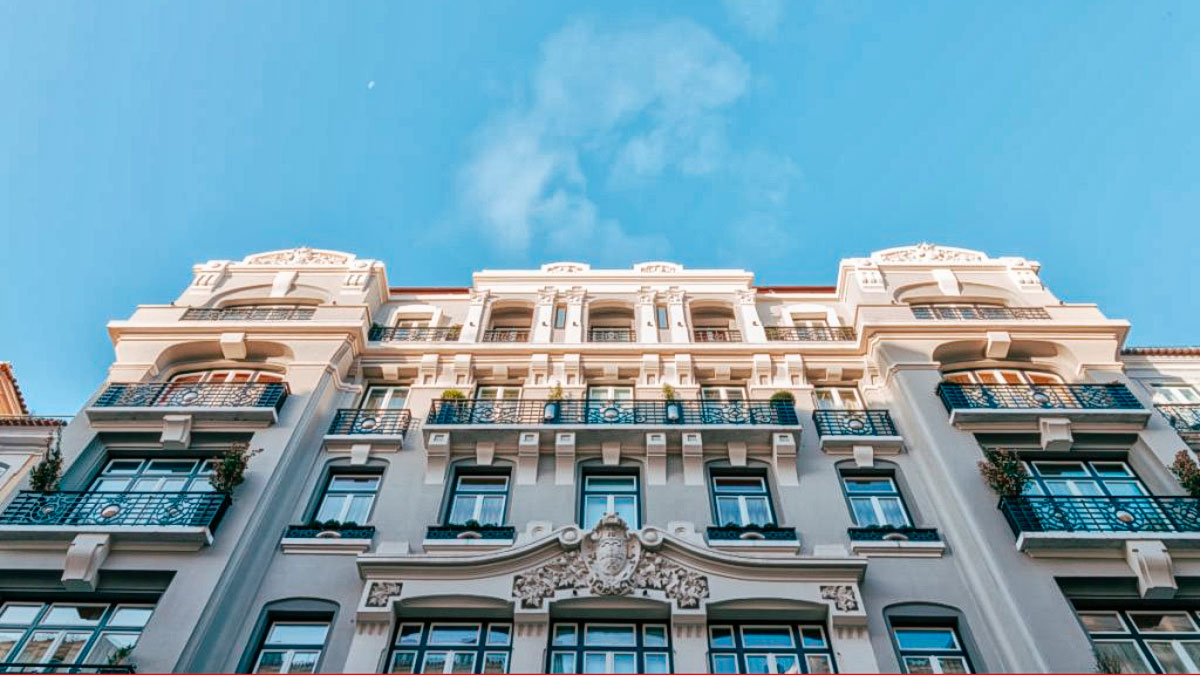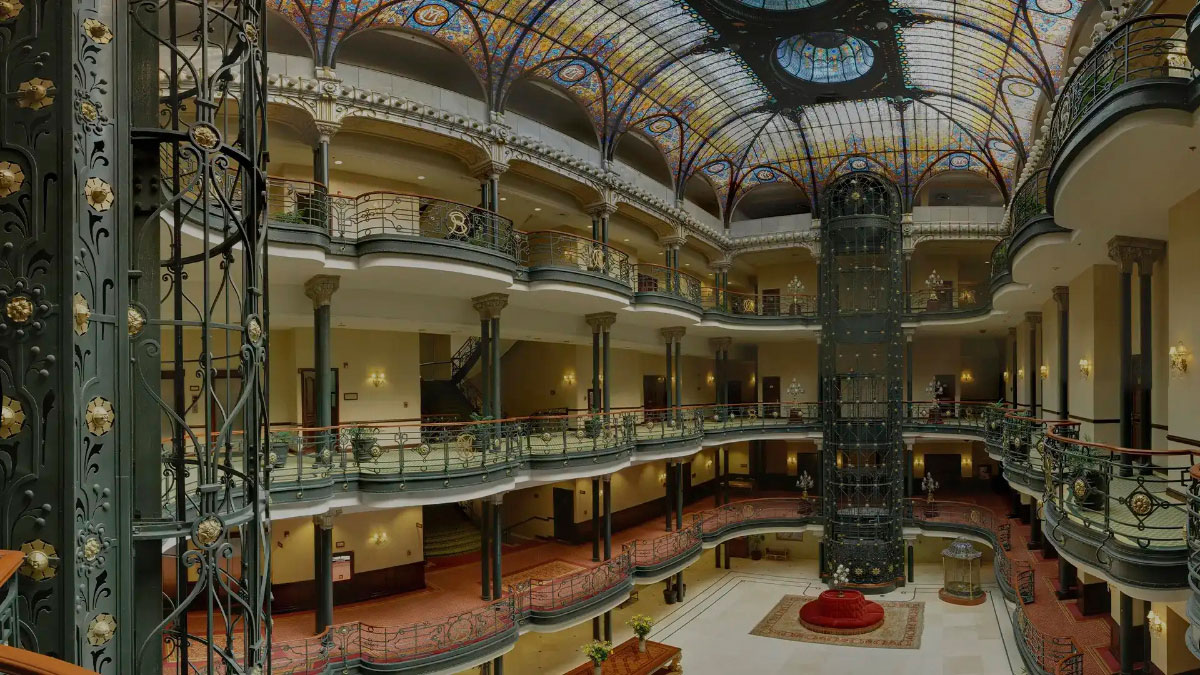In the heart of Paris, France, where the Champs Elysées begin, opposite the Luxor obelisk of the Place de la Concorde, a building evokes with its golden stone the magnificence of a bygone era. Its façade breathes the breath of history, like a canvas on which centuries of art, politics, society, intrigues, secrets… all wrapped in neoclassical elegance. Indeed, it seems to whisper voices and cries of the French Revolution, a confused murmur that permeates the pores of its tympana, its Corinthian columns and pilasters, its pediments and cornices, its balustrades, allegorical statues, reliefs, cushioned ashlars, windows, arches, mouldings, medallions and emblems, its metopes, scrolls, garlands and festoons, its wreaths. We are talking about the Hôtel de Crillon.
In 1758, King Louis XV commissioned “the greatest architect of his day”, Ange-Jacques Gabriel, to build two twin buildings overlooking the Place de la Concorde. The two identical buildings, separated by the rue Royale, were initially to house the offices of the French State. While the eastern building housed the headquarters of the French Navy until 2015, the western building, which is now the Hôtel de Crillon, was first occupied by Louis Marie Augustin, Duke of Aumont, a famous patron of the arts, and after him by the architect Louis-François Trouard.
In one of the many rooms of the Hôtel de Crillon building, on 6th February 1778, Benjamin Franklin, the first American ambassador to France, signed with his French counterpart Conrad Alexandre Gérard de Rayneval – together with a trade agreement – the Franco-American treaty recognising the Declaration of Independence of the United States. In 1788, François Félix de Crillon, thanks to the munificence of his father, Louis de Crillon, Duke of Crillon, acquired the building for his home. But the government of the French Revolution stood in his way. It confiscated the property in 1791. From then on, King Louis XVI and Queen Marie-Antoinette were confined to the building. Two years later, in 1793, both were guillotined just a few metres from the building, in the Place de la Concorde itself.
However, the building was soon returned to the Crillon family, whose descendants lived in it for more than a century, until 1904. In 1906, the Société du Louvre – now the Louvre Hotel Group – acquired the property. Finally, after a two-year renovation led by the architect Walter-André Destailleur, Hôtel de Crillon opened its doors on 11th March 1909. But the Taittinger family, owner of the Louvre Hotel Group – famous for its Champagne cellar – sold the company to the American Starwood Capital Group in 2005, and with it, the Hôtel de Crillon. Finally, on 23rd November 2010, Starwood Capital Group announced the sale of the hotel to Saudi Prince Mutaib bin Abdullah bin Abdulaziz Al Saud.
In December 2013, Rosewood Hotels & Resorts took over the operation of the asset, which closed its doors that same year to embark on a modernisation that was completed in 2017. Lebanese architect Aline Asmar d’Amman led a renovation that combined the preservation of protected elements such as the grand staircase and 19th-century halls with a restrained modern style. Tristan Auer, Chahan Minassian, Cyril Vergniol and Karl Lagerfeld worked alongside d’Amman on the €200 million renovation project.
The hotel’s ballrooms also hosted for 20 years (1992-2012) the Bal des débutantes, the “annual ball thrown every winter for European society debutantes”, which, according to Forbes (2005), was one of the top ten parties in the world. The hotel has been visited over the years by figures and personalities as diverse as Theodore Roosevelt, Winston Churchill, Madonna, Taylor Swift, Roger Federer and many more. With 78 rooms and 46 suites, 3 restaurants, a bar, outdoor terrace, gym and wellness area, Atout France – France’s official agency for the development of the country as a global tourist destination – officially designated the Hôtel de Crillon as a Palace hotel in September 2018.
Sources: Wikipedia, Hôtel de Crillon, Web Archive-Forbes.
Images: Hôtel de Crillon.


